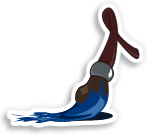Okay, I get this question from friends, colleagues and Clients all the time. “What should I put in my meta data and how can I use this to optimize my SEO?” Well here are my two cents on the matter… But first, what types of Meta tags can we use? There are of course the best know names, Keywords and Description names. But there are also the lesser know and lesser used Author, Copyright, and Robots names as well as a few others.
To get to the meat of it, most of the meta data does nothing! Some of it is just proper documentation (like copyright and author), while others can have have some effects (like description) and others still were once important players but are now deprecated (like keywords).
Keywords: This is one of those areas where many people think that they can write anything with a subsequent search for said terms resulting in a higher hit on Google. This was (sort of) the case at one point, but in the last 3-5 years, Google (the largest search engine in the game with roughly 65% of the market) has not given this meta tag much weight, though it DID have some weight. This is no longer the case! Google no longer uses Keywords in calculating site ranking! Here is a video from Google confirming this:
This said, still use Keywords! Just because Google does not use them does not mean that Bing or Yahoo won’t. It can’t hurt to have them in there, just don’t bet your pay check on them.
Description: This is still a key factor! Don’t under estimate the value of a good meta description. Try to keep the length to under 170 characters including spaces. Don’t worry too much about buzz phrases, though if you can get one or two in there that would be great. Use this more as a store front advertisement or a free Google AdWords. This may be the difference between someone clicking on your site and clicking on a site that is not yours.
Robots: This is one that is often over looked (by myself included) since the default is to have the bots (or spiders) crawl your site and the links on it (on the “ALL” setting). You can specify how you want Google to crawl your site by setting choosing from ALL, NONE, NOINDEX, INDEX, NOFOLLOW, FOLLOW, and NOARCHIVE. If there is interest expressed I can go over what the various types are and when to use each. In general Google’s spiders are pretty smart and know how to crawl your site, but to help out you can set up a site map XML file (which will tell Google all of your pages—XML-Sitemap is a good resource that will automatically generate a XML site map for you) and/or a robot.txt file that will tell Google how to crawl your site.
I hope that this helps and answers some of those questions for you all. Please feel free to post any other ideas or thing you have heard about the ever changing Meta Tag’s role in SEO and the web world.
Tags: HTML, Tricks of the Trade, Web Dev




 Splist for jQuery: I am very excited to announce my jQuery plug-in -
Splist for jQuery: I am very excited to announce my jQuery plug-in -